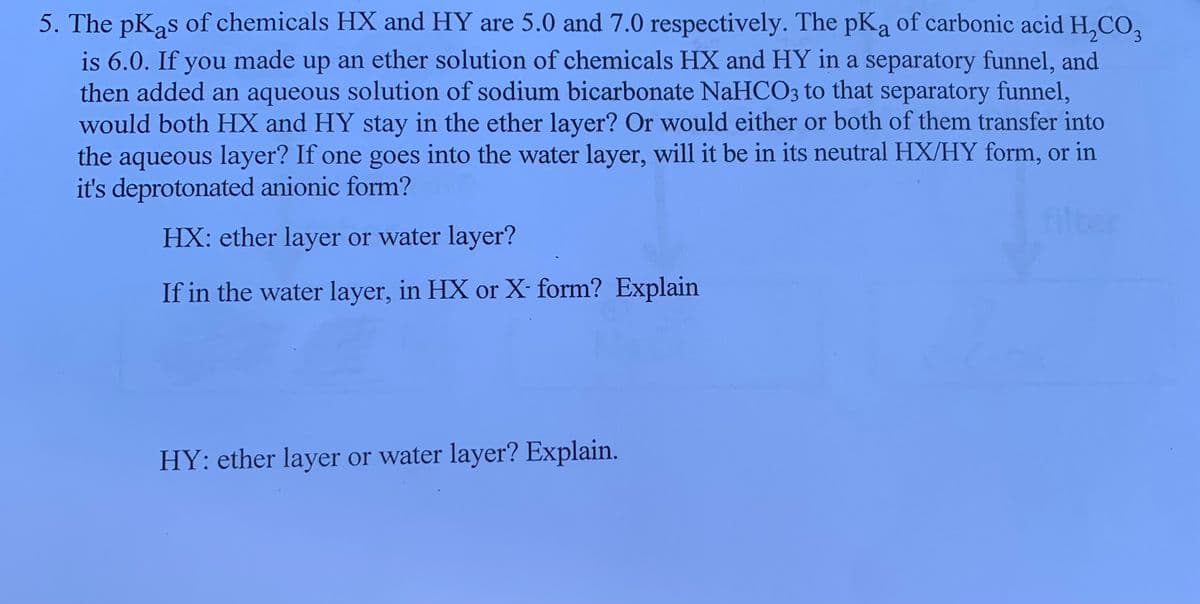5. The pKas of chemicals HX and HY are 5.0 and 7.0 respectively. The pKa of carbonic acid H,CO, is 6.0. If you made up an ether solution of chemicals HX and HY in a separatory funnel, and then added an aqueous solution of sodium bicarbonate NaHCO3 to that separatory funnel, would both HX and HY stay in the ether layer? Or would either or both of them transfer into the aqueous layer? If one goes into the water layer, will it be in its neutral HX/HY form, or in it's deprotonated anionic form? itter HX: ether layer or water layer? If in the water layer, in HX or X form? Explain HY: ether layer or water layer? Explain.
Catalysis and Enzymatic Reactions
Catalysis is the kind of chemical reaction in which the rate (speed) of a reaction is enhanced by the catalyst which is not consumed during the process of reaction and afterward it is removed when the catalyst is not used to make up the impurity in the product. The enzymatic reaction is the reaction that is catalyzed via enzymes.
Lock And Key Model
The lock-and-key model is used to describe the catalytic enzyme activity, based on the interaction between enzyme and substrate. This model considers the lock as an enzyme and the key as a substrate to explain this model. The concept of how a unique distinct key only can have the access to open a particular lock resembles how the specific substrate can only fit into the particular active site of the enzyme. This is significant in understanding the intermolecular interaction between proteins and plays a vital role in drug interaction.

Trending now
This is a popular solution!
Step by step
Solved in 4 steps


